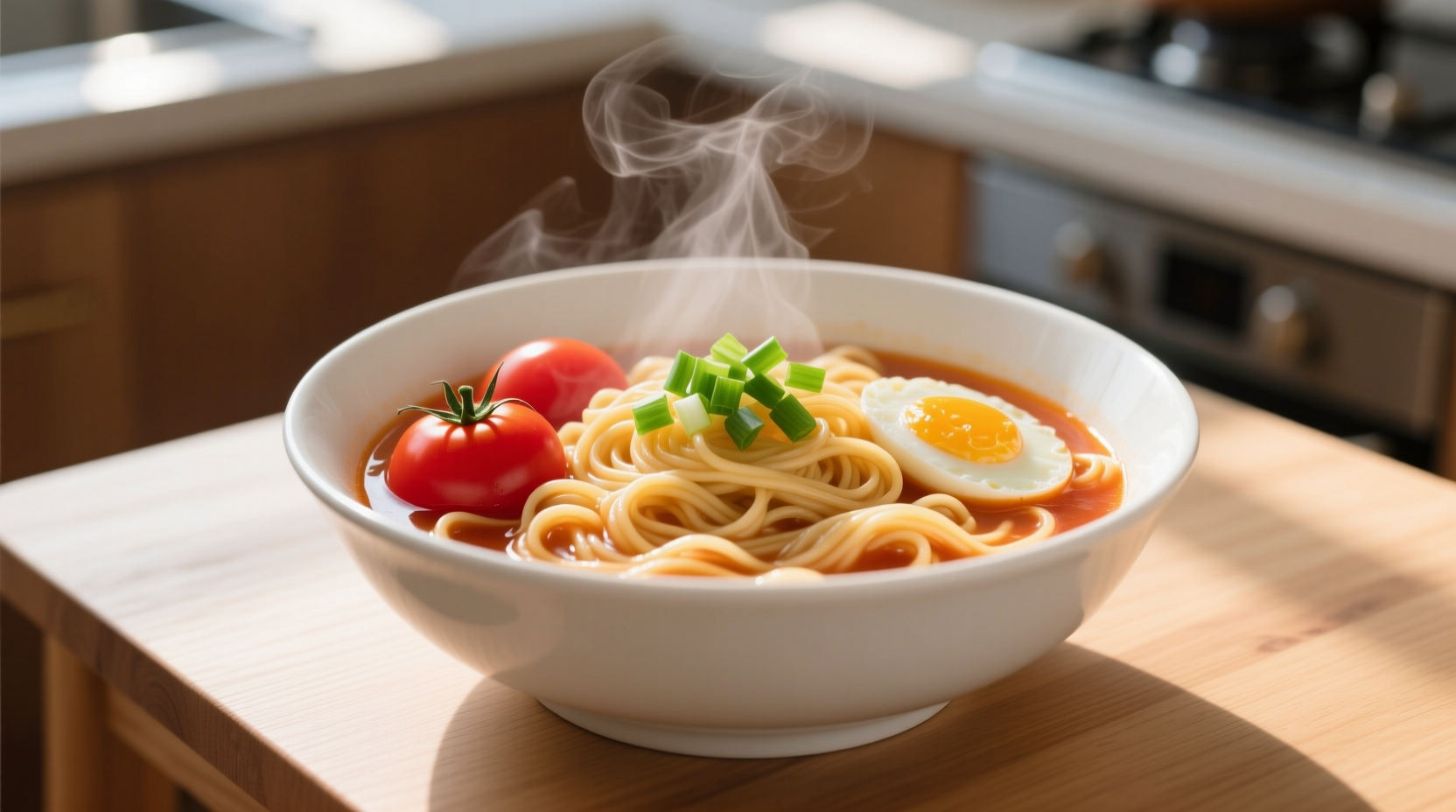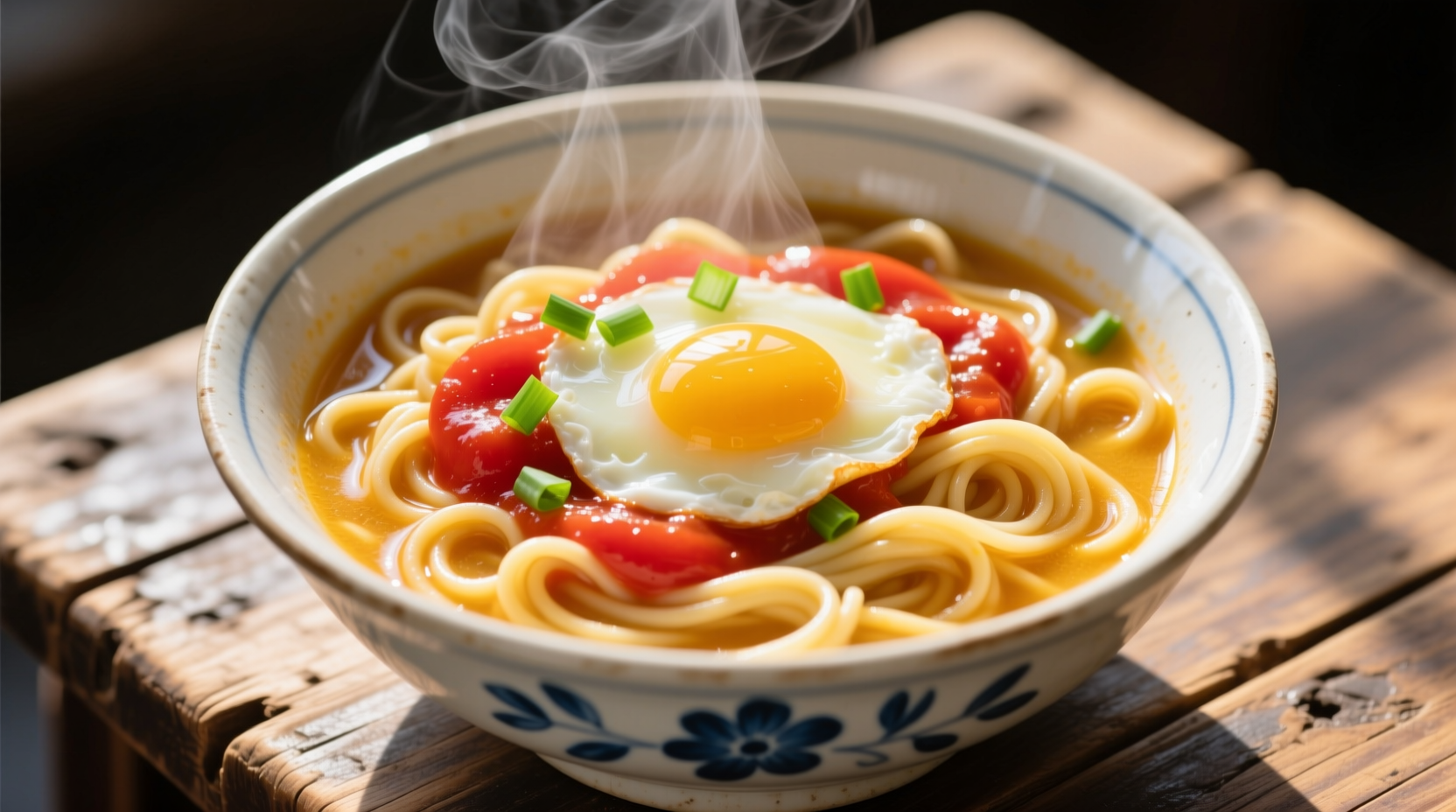Discover why this humble dish has become a global comfort food staple. With roots tracing back to Chinese home cooking traditions, tomato egg noodles offer remarkable versatility while maintaining authentic flavor profiles. Whether you're a college student on a budget or a busy professional seeking a nutritious meal, this recipe delivers restaurant-quality results with pantry staples.
The Story Behind Tomato Egg Noodles
While commonly associated with Chinese cuisine, tomato egg combinations have evolved across multiple culinary traditions. Historical records show Chinese immigrants adapting Italian tomato sauces with traditional egg techniques when settling in Western countries during the early 20th century. This fusion created the version most recognized today - a harmonious blend where the acidity of tomatoes balances the richness of eggs.
| Time Period | Development | Key Regions |
|---|---|---|
| 1920s-1940s | Chinese immigrants adapt Italian tomato sauces | California, New York |
| 1950s-1970s | Integration into Chinese-American home cooking | Chinatowns nationwide |
| 1980s-2000s | Spread through Chinese takeout menus | Global urban centers |
| 2010s-Present | Viral popularity on food sharing platforms | Worldwide home kitchens |
Choosing Your Foundation: Noodle Selection Guide
The right noodles make or break your tomato egg creation. While fresh egg noodles provide the traditional texture, several alternatives work well depending on availability and dietary needs. The critical factor is selecting noodles that maintain structure when combined with the wet tomato-egg mixture.
| Noodle Type | Best For | Cooking Time | Texture Profile |
|---|---|---|---|
| Fresh egg noodles | Authentic preparation | 3-4 minutes | Chewy, slightly springy |
| Dried wheat noodles | Pantry staple option | 6-8 minutes | Firm, holds sauce well |
| Ramen noodles | Quick preparation | 2-3 minutes | Soft with slight bite |
| Rice noodles | Gluten-free alternative | 4-5 minutes | Smooth, delicate |
Mastering the Tomato-Egg Sauce Technique
The magic happens when you properly temper the eggs into the tomato base. Professional chefs consistently achieve superior results by following these precise steps:
- Prepare your tomato base with 2 medium Roma tomatoes, peeled and diced
- Add 1 tablespoon tomato paste for depth of flavor
- Season with 1 teaspoon sugar to balance acidity
- Cook until tomatoes break down into a thick sauce (about 5 minutes)
- Whisk 2 eggs with 1 tablespoon water until fully combined
- Pour eggs slowly into tomato mixture while stirring constantly
- Cook until eggs form soft curds (about 1 minute)

When This Dish Shines: Contextual Applications
Understanding when tomato egg noodles work best ensures perfect results every time. This dish excels in specific situations while having limitations in others:
- Ideal for: Quick weeknight dinners, student meals, light lunches, recovery meals after illness
- Best served: Immediately after preparation, at room temperature or slightly warm
- Pair with: Simple vegetable sides, steamed rice, or protein additions like tofu
- Limitations: Not suitable for make-ahead meal prep (texture degrades after 2 hours)
- Avoid when: Seeking complex gourmet presentation or formal dining occasions
Common Mistakes and How to Fix Them
Even experienced cooks encounter issues with this deceptively simple dish. Here's how to troubleshoot the most frequent problems:
- Watery sauce: Use Roma tomatoes which have less water content, or cook tomatoes longer to reduce liquid
- Rubbery eggs: Temper eggs by adding to warm (not boiling) tomato base and remove from heat immediately when set
- Bland flavor: Add 1/4 teaspoon MSG or 1 teaspoon fish sauce for umami depth without altering flavor profile
- Soggy noodles: Undercook noodles by 1 minute, then finish cooking in the sauce for perfect texture
Customizing Your Tomato Egg Noodles
Once you've mastered the basic technique, these variations let you adapt the dish to different preferences and occasions:
- Protein boost: Add diced ham, shrimp, or crumbled tofu during the last minute of cooking
- Vegetable enhancements: Stir in spinach, bok choy, or bean sprouts just before serving
- Regional twists: Add Sichuan peppercorns for numbing spice or chili oil for heat
- Dietary adaptations: Use gluten-free noodles and add nutritional yeast for vegan version
Serving and Storage Guidelines
For optimal enjoyment, follow these professional recommendations:
- Serve immediately in pre-warmed bowls to maintain ideal temperature
- Garnish with sliced green onions or fresh cilantro for visual appeal
- Store leftovers in airtight container for up to 24 hours (texture degrades after this)
- Reheat gently in microwave at 50% power with 1 tablespoon water to restore moisture
- Never freeze this dish as eggs become rubbery upon thawing











 浙公网安备
33010002000092号
浙公网安备
33010002000092号 浙B2-20120091-4
浙B2-20120091-4